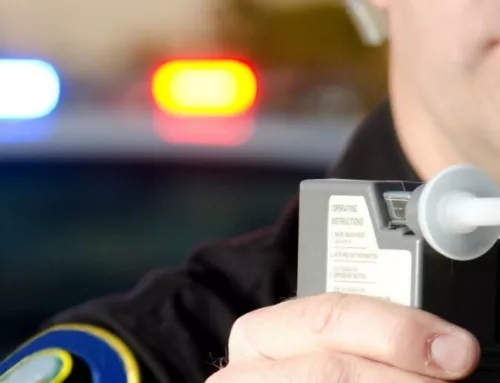Texting And Driving Is About 6 Times More Likely To Cause Accidents As Drunk Drivers
New research has emerged that using voice commands to send text messages and emails from behind the wheel, which is marketed as a safer alternative for drivers, actually is more distracting and dangerous than simply talking on a cellphone, a new AAA study found.
The study expanded to show findings that texting while driving is about 6 times more likely to cause a collision than drunk driving. The consequences can be extensive.
Receiving a reckless driving conviction from texting while driving in Nevada can result in offenders paying up to $1,000 in court fees, 8 demerit points on their license, 50-99 hours of community service, attending a DUI School and 6 months in jail.
Consider another fact: studies have also found that drivers who text face a slowed reaction time by 35%, which is 3 times longer than the reaction time of drunk drivers. Having a cell phone conversation while you’re driving or text messaging has become the nation’s deadliest driving distraction.
Statics show that over 424,000 accidents from injuries drivers, compared to 90,967 injuries from drunk driving. This means texting or using voice commands is more distracting than drunk driving. In other words, 1000’s of people die each year because someone had to text at that moment.
Note: While there is a 6x higher rate of collisions caused by texting compared to drunk driving, In 2015, 42 percent of high school students reported sending a text or email while driving, meaning there are a higher amount of drivers texting behind the wheel than drunk driving, showing DUIs to be more dangerous and severe in the damage of the crashes they cause.
Like the woman pictured below, in today’s world, the majority of drivers believe that they can do two or more tasks at the same time while driving 4000 lbs. of metal, gas and glass, while being safer than driving drunk. But these beliefs do not support the facts. A 2008 study at Virginia Tech found that drivers who text message while behind the wheel are 32 times more likely to be involved in a car crash.

Scientific studies have confirmed that even talking on a hands-free cell phone is just as distracting as holding one to your ear. This strongly suggests it’s the conversation that is distracting. Interestingly, studies have also found that a conversation with a passenger did not distract the driver unless they were under the age of 24.
Do not think you are able to talk on a cell phone and drive a car simultaneously. Nationally, 45% of fatal crashes in 2010 involved a driver talking on a hands-free or Bluetooth device.
If you must have a conversation, please pull over to the side of the road and take the 2 or 3 minutes to have a focused conversation. Place your cell phone in the glove compartment or set it to “Do Not Disturb” to avoid any temptations of answering a call.
It is unlawful to use a hand held wireless communication device to type or enter text, send or read data, engage in non-voice communication, or engage in voice communication without use of a hands-free device. This includes searching the internet, instant messaging and using a hand held cell phone in any way while you are stopped at a stop light.
Another interesting bit of science recently found that individuals who listen to music over 95 decibels causes the human brain’s reaction time to decrease by 25%. Keep in mind that your response to a potential hazard on the road may just take you that much longer to react.
It has been estimated by some researchers that for every mile that a vehicle travels, the driver will on average make 20 separate decisions related to arriving at their destination. Therefore it makes sense that the faster you go, the quicker you have to make driving decisions or completely overlook a critical decision entirely.
It should be self-evident that impaired drivers also tend to make poor or no decisions while their car is in motion. Military pilots are trained not to focus on any one object for more than a second.
But, drivers are not. We teach in our DUI Class It’s common for a driver’s eyes to narrow their focus on a single object for a period of time, ignoring everything else on the road. This is known as “Target Fixation.” An example of this is focusing on the license plate of the vehicle in front for several seconds. When focused on any single object for an extended length of time is known as a loss of “Situational Awareness.”

Crash statistics reflect this reality. Driving is not an intermittent activity, but requires 100% of your attention while the car is in motion. When you are focused on one object for more than a second or two, you become a real hazard to everyone else on the road.
Research has demonstrated that the majority of vehicle crashes will happen when a driver’s eyes are distracted from the road for 3 secs or more. Imagine how long is 3 seconds is. Just 6 snaps of your fingers. Try it… 6 quick snaps. Ever had the experience of driving in traffic, look down for a moment, and when you look back at the road, all you see are fast approaching brake lights?
When you look away from the road for a couple of moments, it can take you up to several seconds to reacquire situational awareness.
Situational awareness is defined as the perception of the environment you are driving in at that moment and the understanding of what is happening, while able to predict what changes on the road may happen in the next few seconds.






Leave A Comment